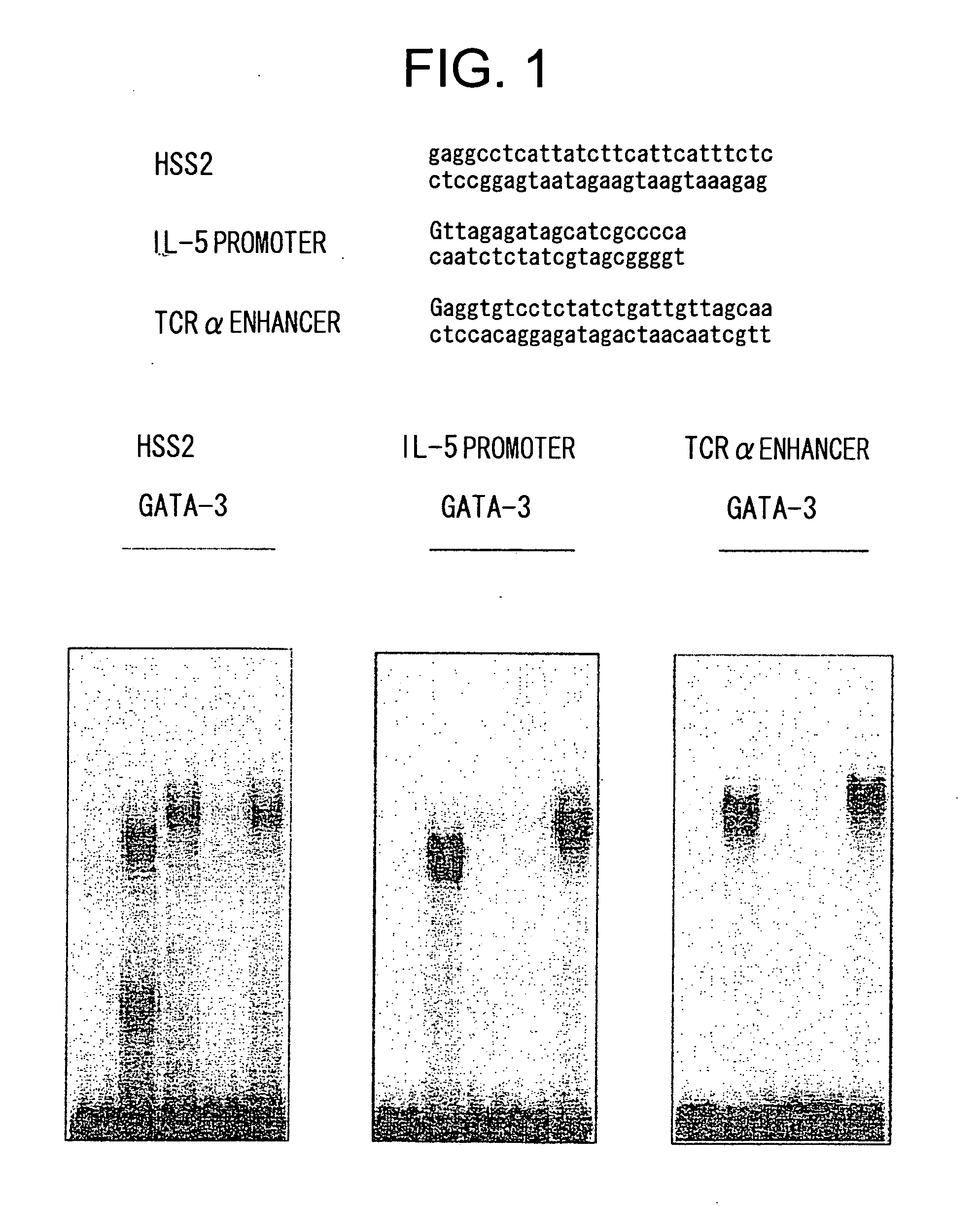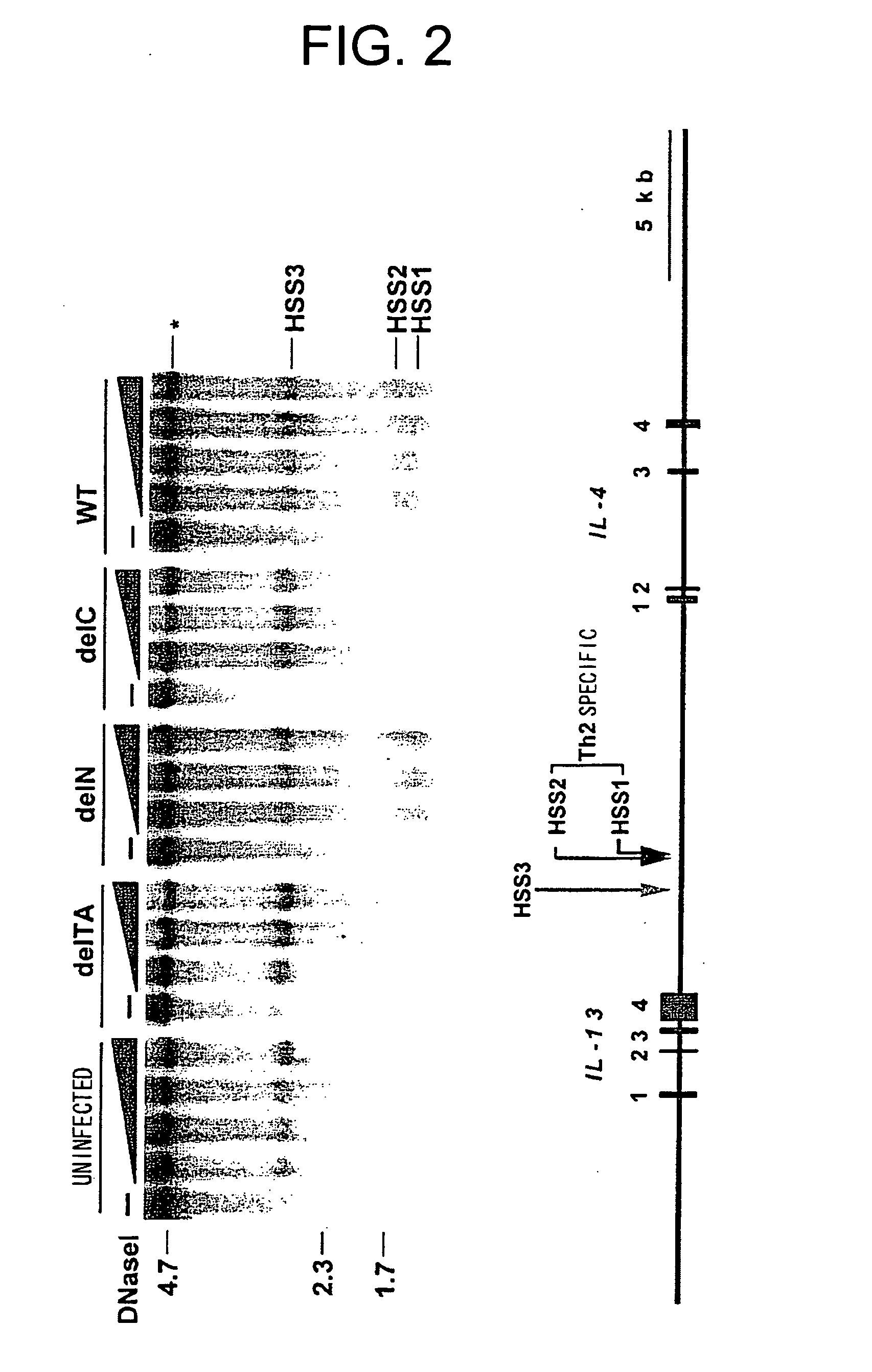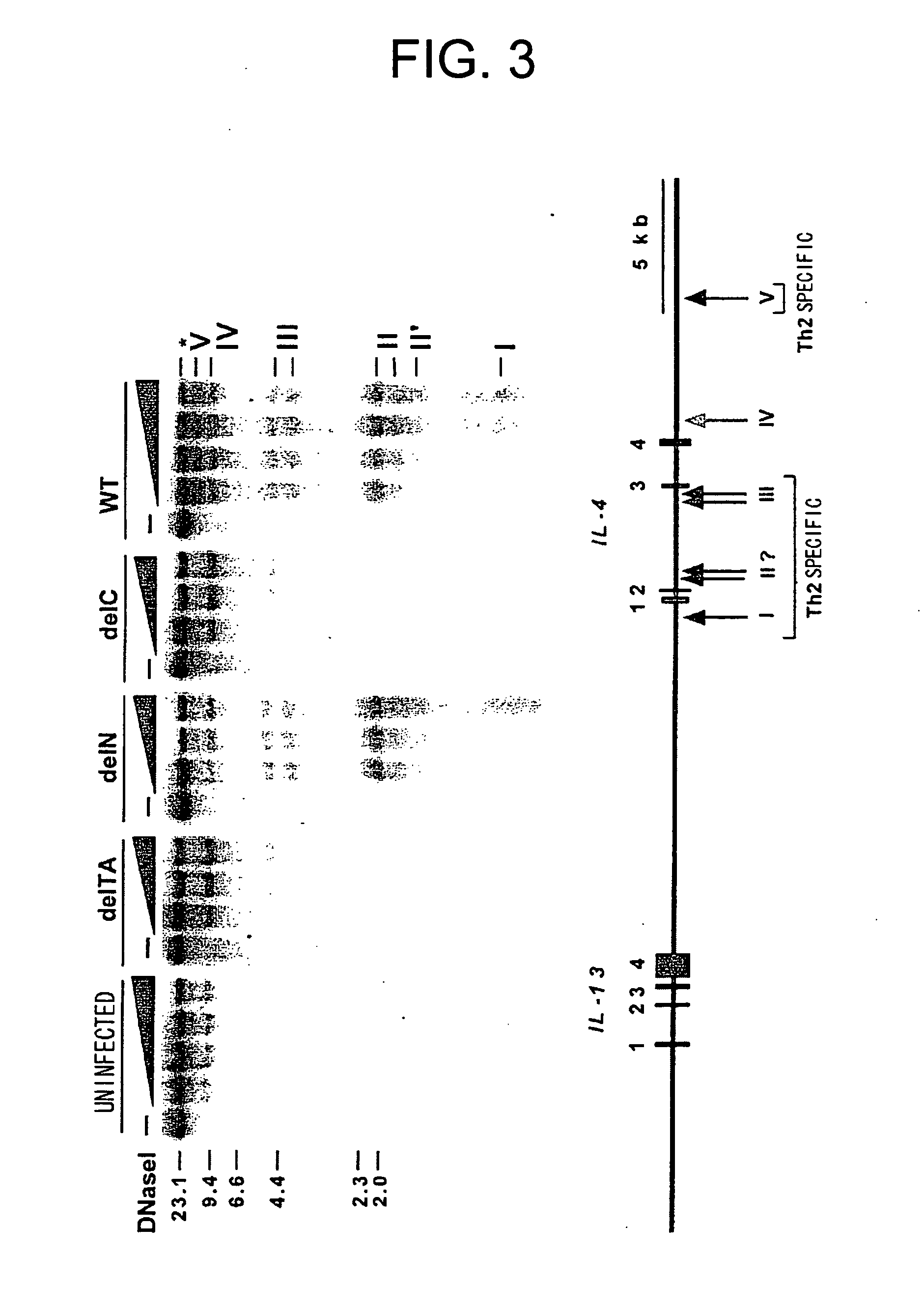Decoy for treating and/or preventing th2 cytokine-associated allergic disease, gata3 mutant protein and medicinal compositions containing the same
a technology of th2 cytokine and gata3, which is applied in the field of agents for treating and/or preventing th2 cytokine-associated allergic diseases, can solve the problems of low binding affinity, unproven underlying mechanism, and unsuitable long-term use of steroids, etc., and achieves low binding affinity, low binding affinity, and high binding affinity.
- Summary
- Abstract
- Description
- Claims
- Application Information
AI Technical Summary
Benefits of technology
Problems solved by technology
Method used
Image
Examples
example 1
Construction of Genes Encoding the Wild Type GATA3 Protein and GATA3 Mutant Proteins
[0075] Wild type GATA3 protein and various GATA3 mutant proteins were prepared. Mouse GATA3 protein cDNA, retrovirus vector pMXI, and mammalian cell expression vector pME18S were provided by Professor Yamamoto (University of Tsukuba), Professor Kitamura (The Institute of Medical Science, The University of Tokyo), and Associate Professor Maruyama (Tokyo Medical and Dental University), respectively. In order to introduce the genes into T cells, wild type and mutant GATA3 cDNAs were inserted between EcoRI and NotI sites of pMXI which expresses green fluorescent protein (GFP) bicistronically. The cDNAs were also inserted into pME18S at EcoRI and NotI sites in order to express them in COS cells.
[0076] The delTA mutant has a deletion in the transcription activation region (lacking amino acids 29 to 168). Two PCR fragments comprising this deletion were generated using GATA3 protein-encoding cDNA as a temp...
example 2
The Specificity of the GATA3 Protein for the HSS2 Sequence and GATA3 Binding Sequences within the Transcription Regulatory Regions of Genes
[0083] Cell extracts from COS cells expressing GATA3 were subjected to electrophoretic mobility shift assay (EMSA) using a probe comprising the HSS2 sequence (HSSGATA sequence). The results are shown in FIG. 5. The protein complex which binds to the probe comprising the HSS2 sequence disappeared by excessive addition of unlabeled DNA having the same sequence or a GATA3 binding sequence within the gene transcription regulatory region (TCRαGATA sequence: GATA sequence of the enhancer of T cell receptor α chain) due to competitive inhibition. A mutated HSS2 sequence did not induce inhibition, revealing that the specific sequence was recognized. Anti-GATA3 antibody specific super shift was observed, revealing that the protein in the complex was GATA3.
[0084] The GATA3 complex was also detected by EMSA using a probe comprising the GATA3 binding seque...
example 3
Identification of the Region in the GATA3 Protein Required for Binding to the GATA3 Binding Sequence
[0085] Gel shift assays were conducted using the GATA3 mutant proteins and wild type GATA3 protein expressed in COS cells obtained in Example 1 and double stranded oligonucleotides comprising the HSS2 sequence (HSS2 on top panel of FIG. 1, the sense strand is shown in SEQ ID NO: 3), the IL-5 promoter sequence comprising a GATA3 binding sequence (IL-5 promoter on top panel of FIG. 1, the sense strand is shown in SEQ ID NO: 4), and the TCRα enhancer sequence comprising a GATA3 binding sequence (TCRα enhancer on top panel of FIG. 1, the sense strand is shown in SEQ ID NO: 5).
[0086] The gel shift assays were conducted by radio-labeling the above synthetic oligonucleotides with 32P according to conventional methods. The results are shown in FIG. 1. Wild type (WT) GATA3 protein and delTA mutant protein bound to the above-mentioned three types of GATA3 binding sequences; however, the delN ...
PUM
| Property | Measurement | Unit |
|---|---|---|
| time | aaaaa | aaaaa |
| pH | aaaaa | aaaaa |
| pH | aaaaa | aaaaa |
Abstract
Description
Claims
Application Information
 Login to View More
Login to View More - R&D
- Intellectual Property
- Life Sciences
- Materials
- Tech Scout
- Unparalleled Data Quality
- Higher Quality Content
- 60% Fewer Hallucinations
Browse by: Latest US Patents, China's latest patents, Technical Efficacy Thesaurus, Application Domain, Technology Topic, Popular Technical Reports.
© 2025 PatSnap. All rights reserved.Legal|Privacy policy|Modern Slavery Act Transparency Statement|Sitemap|About US| Contact US: help@patsnap.com



